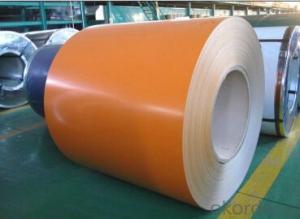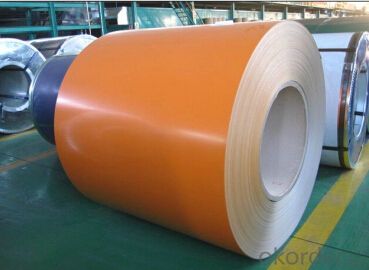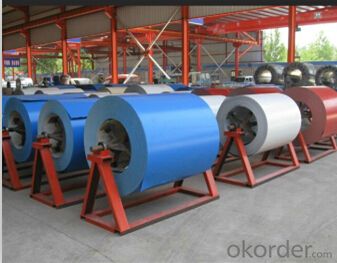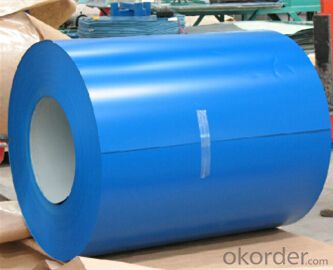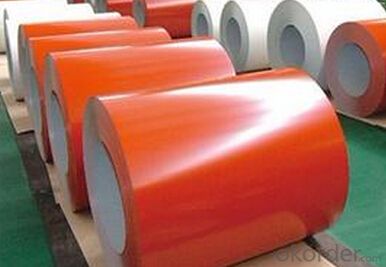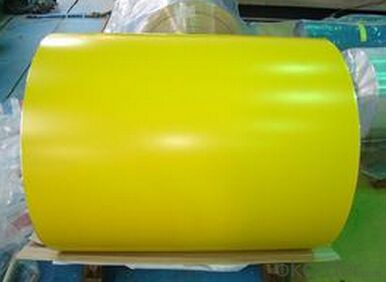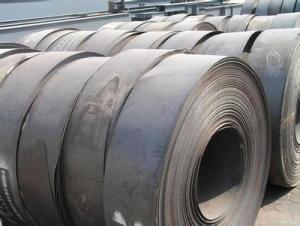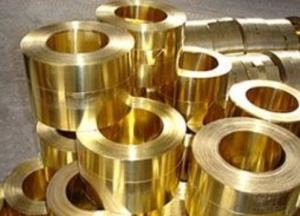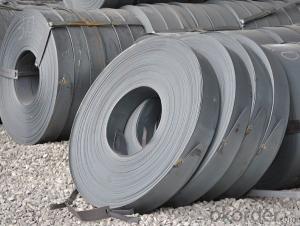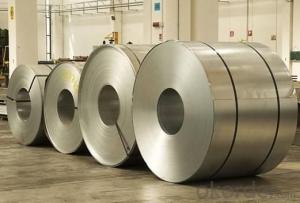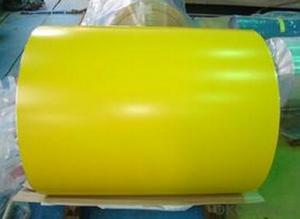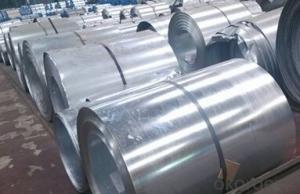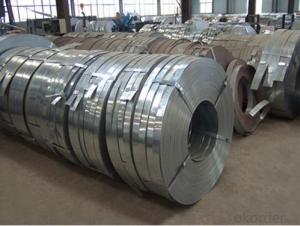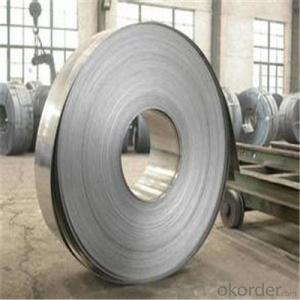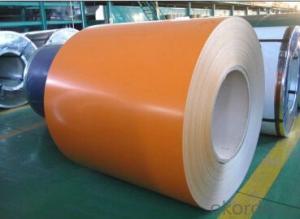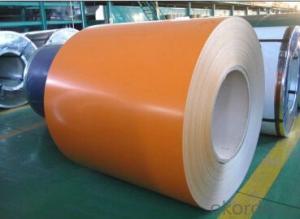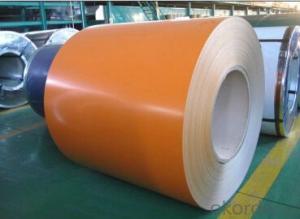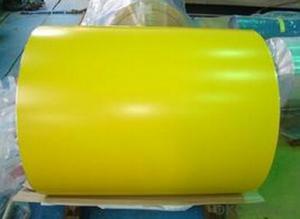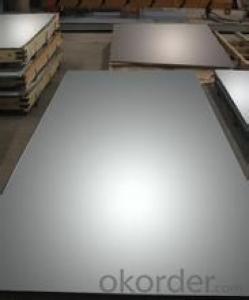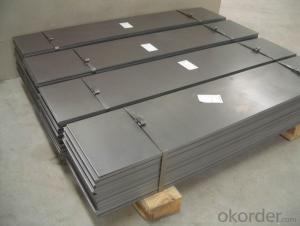Best Prepainted Galvanized Steel Coil ASTM 615
- Loading Port:
- Tianjin
- Payment Terms:
- TT or LC
- Min Order Qty:
- 25 m.t.
- Supply Capability:
- 5000 m.t./month
OKorder Service Pledge
OKorder Financial Service
You Might Also Like
1.Structure of Prepainted Galvanized steel Coil :
With Gi as base metal,after pretreatmet (degrease and chemical treatment) and liquid dope with several Layers of color,then after firing and cooling,finally the plate steel is called pre-painted galvanized steel ( PPGI) .Pre-painted galvanized steel is good capable of decoration ,molding,corrosion resistance
2.Main Features of Prepainted Galvanized steel Coil:
• Excellent process capability
• Smooth and flat surface
• Workability, durability
• Excellent heat resistance performance
• High strength
• Good formability
• Good visual effect
3.Prepainted Galvanized steel Coil Images
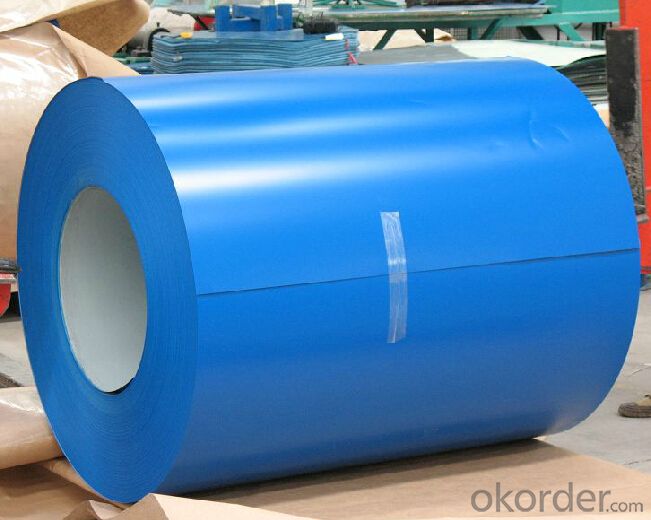


4.Prepainted Galvanized steel Coil Specification
Standard:ASTM, GB,JIS,JIS G3302 ASTM 755 EN10169
Grade: DX51D CGCC CS
Thickness: 0.13mm~3.0mm,
Width: 1250,600-1250mm
Coil weight:3-12 MT
Coil ID:508/610mm
Chemical composition:
C | Si | Mn | Cr | Ni | P | S |
0.150 | 0.476 | 11.231 | 12.50 | 0.900 | 0.039 | 0.010
|
5.FAQ of Prepainted Galvanized steel Coi
We have organized several common questions for our clients,may help you sincerely:
1.How do you control your quality
We have established the international advanced quality management system,every link from raw material to final product we have strict quality test;We resolutely put an end to unqualified products flowing into the market. At the same time, we will provide necessary follow-up service assurance.
2.how long we will receive the goods ?
After receiving your deposit or workable lc ,our normal shipment date is 15-20days,and it takes around 28 days to reach your port of destination. But is up to different destination
3. what is your moq
Normally our moq is 25per size ,but it is up to different size
- Q: Can steel strips be used in the construction of storage tanks?
- Yes, steel strips can be used in the construction of storage tanks. Steel strips provide strength, durability, and corrosion resistance, making them suitable for containing various liquids or gases in storage tanks.
- Q: Are steel strips flexible?
- No, steel strips are not flexible. They are rigid and do not easily bend or deform.
- Q: What are the common yield strengths for steel strips?
- The yield strengths of steel strips can vary depending on the specific type of steel and its intended application. Generally, yield strengths for steel strips range from 210 to 550 megapascals (MPa). Mild steel, which is a type of low carbon steel, typically has a yield strength of around 210 MPa. On the other hand, spring steel, which is a higher carbon steel, can have yield strengths exceeding 550 MPa. It is worth noting that these values are approximate and can be influenced by factors such as the manufacturing process, heat treatment, and alloy composition. Therefore, it is always advisable to refer to the specific material specifications or industry standards for accurate and precise information regarding the yield strength of a particular steel strip.
- Q: What are the common industry standards for steel strips?
- The common industry standards for steel strips include specifications regarding dimensions, chemical composition, mechanical properties, and surface finish. Some widely recognized standards include ASTM A36, ASTM A1011, and EN 10130. These standards ensure consistency and quality in the production and use of steel strips across various industries.
- Q: Are steel strips used in the production of automotive exhaust systems?
- Yes, steel strips are commonly used in the production of automotive exhaust systems. They are used for various components such as pipes, mufflers, and catalytic converters due to their strength, durability, and resistance to high temperatures.
- Q: Can steel strips be used in automotive stamping?
- Yes, steel strips can be commonly used in automotive stamping processes. They are often used to create various automotive components such as body parts, frames, brackets, and reinforcements due to their strength, durability, and cost-effectiveness.
- Q: What are the different slitting techniques for steel strips?
- There are several different slitting techniques for steel strips, including rotary shear, loop slitting, and crush cutting. These techniques involve different methods of cutting the steel strip into narrower widths, with each technique offering its own advantages and suitability for specific applications.
- Q: Are steel strips resistant to rust or oxidation?
- Yes, steel strips are generally resistant to rust or oxidation due to the protective oxide layer formed on the surface of the steel, which acts as a barrier against moisture and oxygen.
- Q: What are the factors that affect the fatigue resistance of steel strips?
- The fatigue resistance of steel strips can be affected by several factors. These factors include the material composition, surface condition, heat treatment, manufacturing process, loading conditions, environmental factors, and design considerations. The chemical composition of the steel, including impurities and alloying elements, can have a significant impact on its fatigue resistance. For example, higher levels of carbon can increase hardness and strength but may decrease fatigue resistance. The surface finish and quality of the steel strip can also affect fatigue resistance. Scratches, nicks, or corrosion on the surface can act as stress concentrators and initiate fatigue cracks. Proper surface treatments, such as grinding or shot blasting, can reduce stress concentrations and improve fatigue resistance. The heat treatment process used during manufacturing can greatly influence fatigue resistance. Proper heat treatment, such as quenching and tempering, can enhance strength and toughness, thereby improving fatigue resistance. The manufacturing process itself can also impact fatigue resistance. Variables like rolling, annealing, or cold working can introduce residual stresses or microstructural changes that affect fatigue behavior. Proper control and optimization of these processes can enhance fatigue resistance. The type and magnitude of the applied load can influence fatigue resistance. Factors like cyclic stress amplitude, stress ratio, and loading frequency can affect fatigue life. Higher stress amplitudes, stress ratios, and loading frequency can result in reduced fatigue resistance. Environmental factors, such as temperature, humidity, and corrosive agents, can also affect fatigue resistance. Elevated temperatures can accelerate fatigue crack growth, while corrosive environments can promote crack initiation and propagation, leading to reduced fatigue life. The design of steel strips, including their geometry, dimensions, and the presence of stress concentrators, can impact fatigue resistance. Proper design practices, such as filleting sharp corners or adding radius to stress concentration areas, can help improve fatigue performance. In conclusion, the fatigue resistance of steel strips is influenced by various factors. Understanding and optimizing these factors can lead to improved fatigue performance and longer service life.
- Q: Are steel strips suitable for agricultural applications?
- Yes, steel strips are suitable for agricultural applications. They are durable, resistant to corrosion, and can be used for various purposes such as fencing, construction of farm equipment, and irrigation systems. Steel strips provide strength and stability, making them an ideal choice for agricultural tasks that require heavy-duty materials.
Send your message to us
Best Prepainted Galvanized Steel Coil ASTM 615
- Loading Port:
- Tianjin
- Payment Terms:
- TT or LC
- Min Order Qty:
- 25 m.t.
- Supply Capability:
- 5000 m.t./month
OKorder Service Pledge
OKorder Financial Service
Similar products
Hot products
Hot Searches
Related keywords
